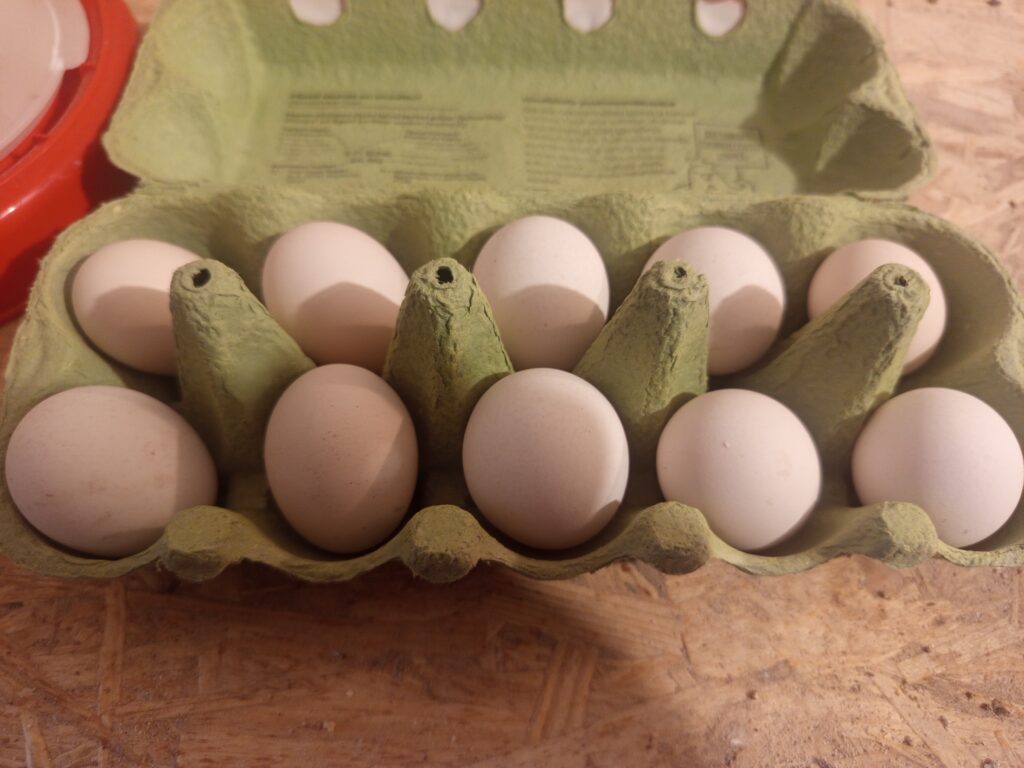The incubator welcomes another new adventure today. 10 Mille Fleur eggs have just begun their 21-day journey, marking our first attempt with a breed we’ve never hatched before. After successfully expanding from chickens to quail to guinea fowl, we’re adding another beautiful variety to our growing expertise.
What is Mille Fleur?
“Mille Fleur” literally translates to “thousand flowers” in French, and once you see these birds, the name makes perfect sense. Their intricate feather pattern resembles a field of tiny flowers scattered across their plumage—each feather tipped with white and black speckling over a rich golden-brown base.
Most commonly found in Belgian d’Uccle bantams, Mille Fleur is one of the most striking color patterns in the poultry world. These aren’t just pretty birds; they’re living artwork with personalities to match their beautiful appearance.

Venturing into Unknown Territory
This represents our most experimental hatch yet. While we’ve built confidence with quail, chickens, and guinea fowl, Mille Fleur birds—especially if these are bantams—present entirely new challenges:
Size considerations: If these are bantam eggs, they’re smaller than our usual chicken eggs, potentially requiring different handling techniques during candling and hatching.
Breed-specific needs: Different breeds can have varying temperature sensitivities, development timelines, and hatching characteristics that we’ll need to learn through experience.
Unknown genetics: Without knowing the exact breeding history of these eggs, we’re working with complete unknowns regarding fertility rates and genetic vigor.
The Beauty Factor
Beyond the practical challenges, there’s something exciting about potentially hatching birds renowned for their stunning appearance. Mille Fleur birds are often kept specifically for their ornamental value—they’re the kind of chickens that stop visitors in their tracks and make people say, “I had no idea chickens could be so beautiful!”
If successful, these birds would add an entirely new aesthetic dimension to our flock, combining function with pure visual appeal.
Learning Curve Ahead
Temperature precision will be crucial. Bantam eggs, if that’s what these are, can be more sensitive to temperature fluctuations than standard-sized eggs.
Candling techniques might need adjustment for smaller eggs and potentially different development visibility compared to our experience with larger breeds.
Hatching assistance considerations may be different with smaller birds and potentially more delicate chicks.
Setting Realistic Expectations
As our first attempt with this breed, we’re approaching these 10 eggs as a learning experience first, successful hatch second. Even if only half of them hatch successfully, we’ll gain invaluable experience for future Mille Fleur attempts.
Best-case scenario: 7-8 healthy chicks that thrive and potentially become the foundation for a Mille Fleur breeding program.
Realistic expectation: 5-6 successful hatches with lessons learned about this breed’s specific needs.
Educational value: Regardless of numbers, understanding how Mille Fleur development compares to our other breeds.
The 21-Day Timeline
Days 1-7: Establishing consistent conditions and monitoring early development, with particular attention to any breed-specific characteristics.
Day 7: First candling—our chance to see how Mille Fleur embryo development compares to what we’ve observed in other breeds.
Days 8-18: Continued monitoring with special attention to any unique development patterns or needs.
Day 18: Lockdown and increased humidity, hoping our standard protocol works well for this new breed.
Days 19-21: The moment of truth—seeing if our techniques translate successfully to Mille Fleur genetics.
Adding Diversity
These eggs represent more than just another hatch—they’re expanding our farm’s genetic diversity and our own expertise with specialty breeds. Each new variety we successfully hatch broadens our understanding of poultry incubation and brings us closer to becoming true generalists rather than specialists in just one or two breeds.
The Anticipation
There’s something special about incubating a breed you’ve never worked with before. Every candling will reveal something new, every development stage will be a learning opportunity, and hatching day will bring the excitement of seeing birds we’ve never seen emerge from shells.
The incubator is maintaining perfect conditions, and these 10 mysterious eggs are beginning their transformation. In three weeks, we’ll discover whether our growing incubation skills translate successfully to the beautiful world of Mille Fleur poultry.
Ten eggs, twenty-one days, and a completely new adventure ahead.
Have you ever tried incubating breeds you’d never worked with before? Share your experiences with venturing into unknown poultry territory—we’d love to hear about your first attempts with new varieties!
What’s been your most challenging or exciting new breed to work with? Tell us about your adventures with rare or specialty poultry!